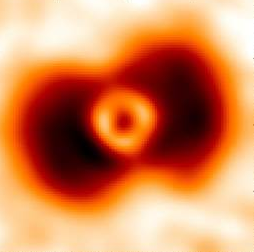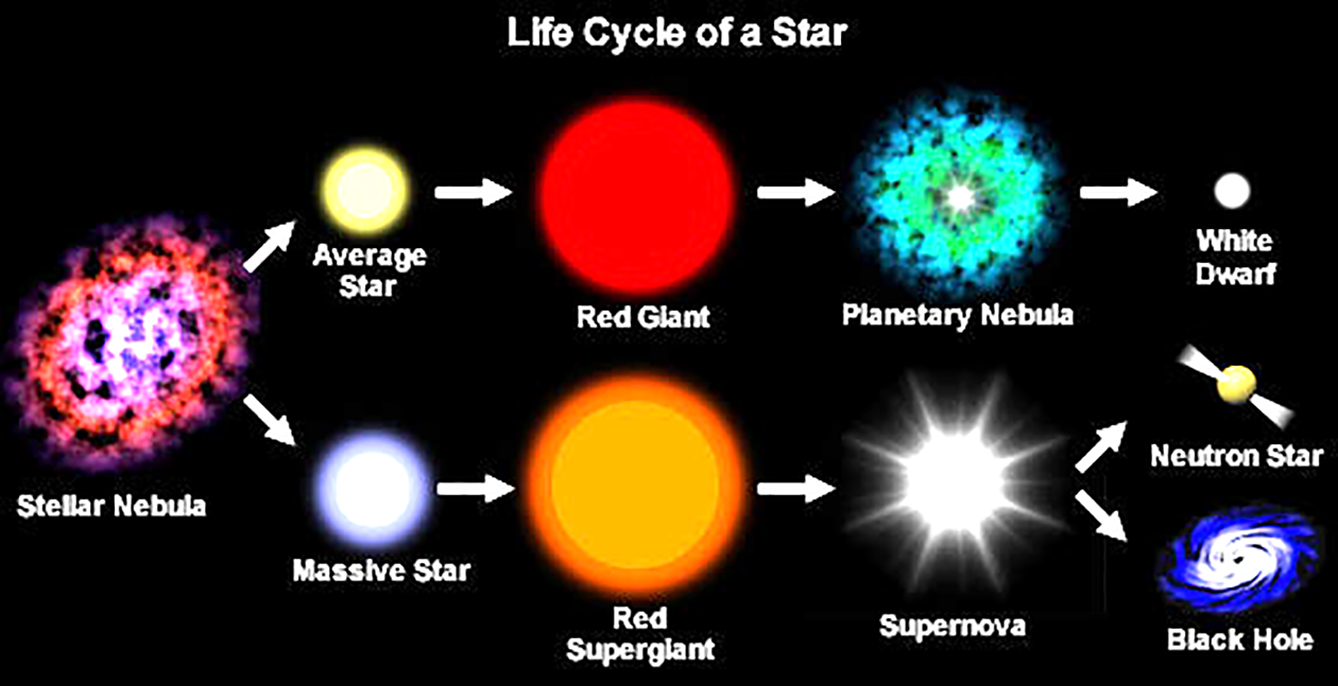Science & Technology
Dust Formation in Novae Ejecta
- 24 Aug 2022
- 6 min read
For Prelims: Cosmic Dust, Novae, White Dwarf, Space Technology, Space-Dust Collisions
For Mains: Origin of Universe and Significance of Space Discoveries
Why in News?
Scientists from SN Bose Centre for Basic Science (SNBCBS) observed the imploding novae called Nova V1280 Scorpii and found that a thick dust formed around it after a month and lasted for about 250 days.
What is Novae?
- A nova is an astronomical event in which a strong explosion occurs temporarily on the stellar (Pertaining to Stars) surface, increasing the brightness by hundreds to millions of times, then slowly darkening over weeks or months.
- It occurs in a binary system consisting of a white dwarf and a main sequence star.
- A binary star system occurs when two stars both orbit around a common center of mass.
- The brighter star is officially classified as the primary star, while the dimmer of the two is the secondary.
- White dwarfs are stars that have burned up all of the hydrogen they once used as nuclear fuel.
- Such stars have very high density. A typical white dwarf is half the size of our Sun and has a surface gravity 1,00,000 times that of Earth.
- A binary star system occurs when two stars both orbit around a common center of mass.
What is Cosmic Dust?
- Cosmic dust consists of tiny particles of solid material floating around in the space between the stars.
- Cosmic dust or extra-terrestrial dust formation in the hostile environment of novae ejection has been an open question for many years. Hundreds of kilograms of such dust fall on the Earth every day.
What are the Findings?
- Scientists constructed simple models to estimate parameters of dust like hydrogen density, temperature, luminosity and elemental abundances during pre- and post-dust phase.
- High abundance of certain elements like carbon, nitrogen and oxygen was found along with a mixture of small amorphous carbon dust grains and large astrophysical silicate dust grains.
- Dust formation in novae ejecta is not a common phenomenon.
- It has been observed only in a few novae within 30 to 100 days after an outburst, as compared to interstellar dust, which typically takes a few thousand years to form and hence provided opportunity to study the dust formation process in novae.
- High abundance of isotopes of certain elements like carbon, nitrogen and oxygen was found in the predust phase.
- A mixture of small amorphous carbon dust grains and large astrophysical silicate dust grains present in the ejecta was found in the post dust phase.
- Some complex organic compounds like amorphous organic solids with a mixed aromatic–aliphatic structure was found which play an important role in formation of molecular clouds in stars and planets.
What is the Significance of the Study?
- Such Space-dust collisions may have propelled organisms over enormous distances between planets to start life on a planet.
- Their study of novae dust could help in understanding the nature and characteristics of the dust and associated processes.
- The team has suggested that as the expanding dust shell of V1280 Scorpii Nova continues to expand these dust grains will eventually mix with interstellar matter. But that will take thousands of years - a small time in the cosmic time scale.
UPSC Civil Services Examination, Previous Year Questions (PYQs)
Q. Who of the following scientists proved that the stars with mass less than 1.44 times the mass of the Sun end up as White Dwarfs when they die? (2009)
(a) Edwin Hubble
(b) S. Chandrashekhar
(c) Stephen Hawking
(d) Steven Weinberg
Ans: (b)
Exp:
- S. Chandrasekhar was an Indian American astrophysicist famous for his work on the structure and evolution of stars. He received the Nobel Prize for Physics in 1983, jointly with William A. Fowler.
- Chandrasekhar is well-known for his calculation of the ‘Chandrasekhar Limit’, a theoretical limit on the mass of the White Dwarf Stars, which is approximately 1.44 solar masses. Those with masses under the Chandrashekhar limit exist as White Dwarf, while those above are subject to further gravitational collapse. Chandrasekhar showed it using Albert Einstein’s Special Theory of Relativity and the Principles of Quantum Physics.
- In 1979, NASA named the third of its four “Great Observatories” after Chandrasekhar. The Chandra X-ray Observatory was launched and deployed by Space Shuttle Columbia on 23 July 1999. The asteroid, 1958 Chandra is also named after Chandrasekhar.
- A White Dwarf is what stars like the Sun become after they have exhausted their nuclear fuel. Near the end of its nuclear burning stage, this type of star expels most of its outer material, creating a planetary Nebula.
- Therefore, option (b) is the correct answer.









